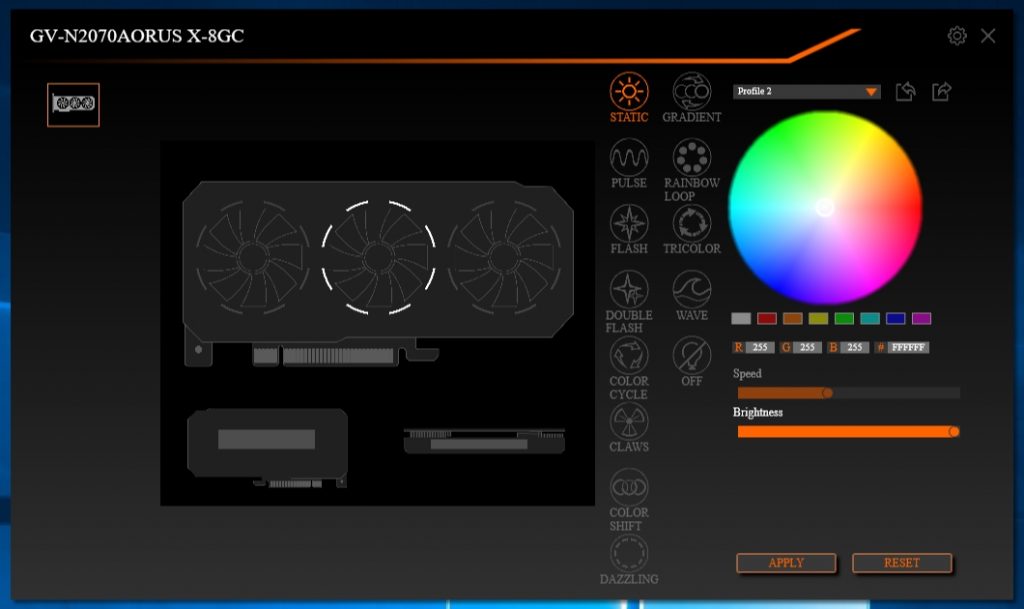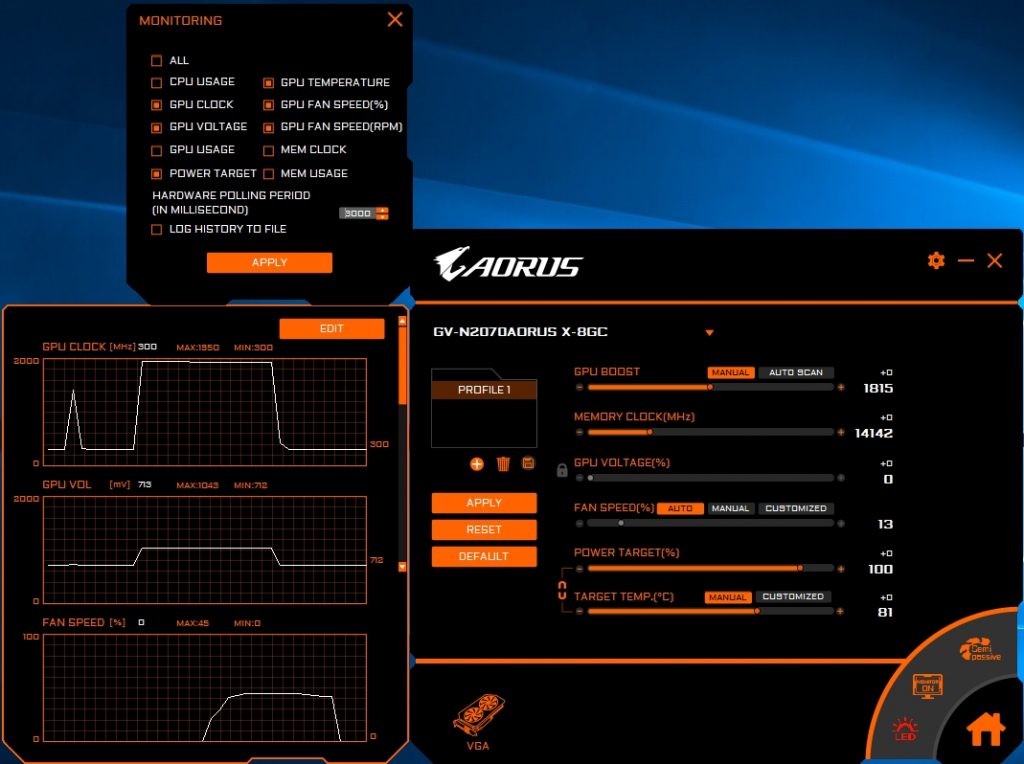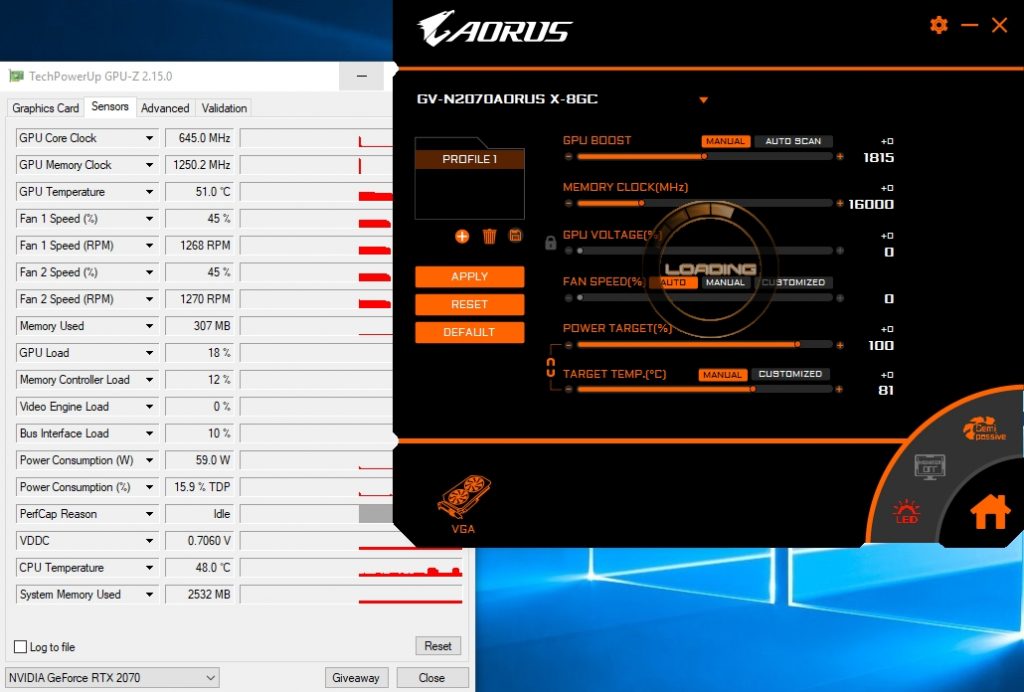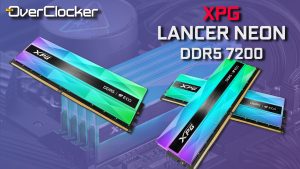AORUS RTX 2070 XTREME Review
The Software: AORUS Engine
For the unfamiliar, GIGABYTE uses the AORUS engine for their graphics card configuration. This includes the usual system hardware OSD functionality, fan control, GPU performance controls (GPU clock, Memory clock, GPU voltage, Power & Temperature threshold). It covers all the basic, but is severely lacking when it comes to the user interface and its’ intuitiveness or lack thereof. There are better software packages than this from competitors and the two which comes to mind is AfterBurner and EVGA’s Precision software. The issues with the AORUS engine are numerous, including its’ unresponsiveness, lack of true visual customization (layout) and fixed window sizes are just some of the usability limitations. The text is tiny and the orange on black colour scheme is difficult to read. The VGA logo on the boom left suggests that it is clickable, but alas this is not the case. Among the many missing features is a screenshot utility, video recording capabilities and just about any other found in the two leading graphics card utility programs. By and large, you need on the In many ways the AORUS engine shares many if not all of the same usability limitations as the ROG GPU Tweak utility. In all honesty the only thing you need here is RGB Fusion for configuring the LEDs. For everything else there are better tools. The software is perhaps the single weakest part of this graphics card and this is emblematic of the motherboards, too where they seem to fall apart in the software department, while everything else is par excellence.
This interface while functional is rather crude. One would not necessarily think this presentation comes from such a eye pleasing graphics card. Here you will find all the colour configuration options that you’d expect. There isn’t any way to sync up the rest of your AORUS hardware, but each supporting component or peripheral will be added to the left of the screen with its own icon. Each fan can be configured independently, along with the top of the card and the rear plate AORUS motif. Be mindful when switching between lighting profiles as for a brief moment, the card will light up all areas with the previous colour you set for all the lighting zones. This is likely a software bug and here’s to it being fixed in future.
The AORUS Engine has many of the typical dials for configuring the graphics card, but ultimately you’re better off with 3rd party or other vendor software as this software isn’t as responsive as it should be. It also lacks some functionality as detailed earlier.
Not obvious in the screenshot, but there’s an obvious lag in the software. Setting clocks to when they are actually applied takes an unnecessarily long time.
You are here: Page 3









